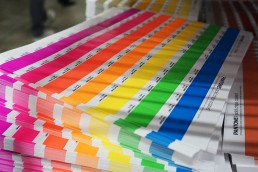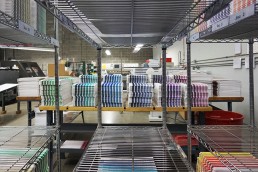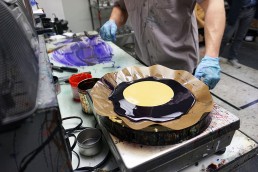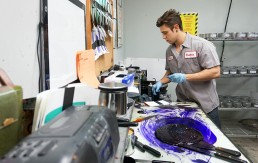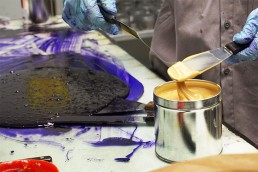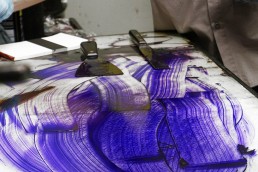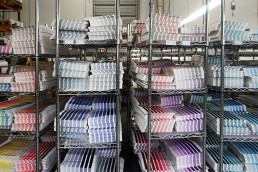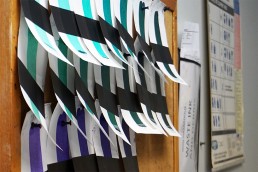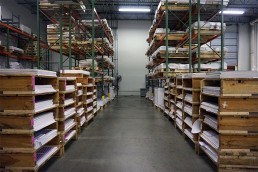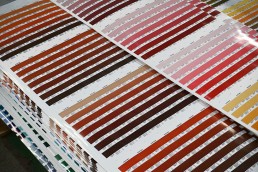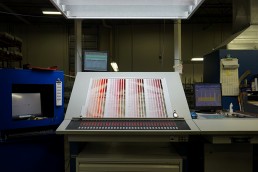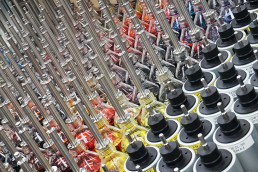A multicolored microcosm: step inside the Pantone factory in New Jersey
In an industrial part of suburban Carlstadt, New Jersey lies a multi-colored microcosm — the Pantone factory. Pantone is known worldwide as the standard language for color communication, used by designers, manufacturers, retailers, and consumers across a huge range of industries.
The history of Pantone dates back to 1963, when then-printing company worker Lawrence Herbert wanted to tackle the issue of producing accurate color matches. As the spectrum is perceived differently by each individual, Herbert decided to create a system of definitively identifying colour, eventually going on to compile the Pantone Matching System. This familiar fan-style catalogue of standardised colors aids designers across the world in matching and communicating different tones, regardless of their individual perceptions.
Since then, pantone’s reach has become immense, expanding to include a range of industries. Digital technology, textiles, plastics, architecture and contract interiors, and paint are a few of the many activities the company now engages in. Additionally, its colour institute helps companies make informed decisions for their products and ideas, as well as providing insight into trend forecasting, brand development, and custom colour solutions. It was with the Pantone Color Institute that Huawei developed its vibrant palette of tech-packed P10 smartphones released earlier this year.
Another fascinating facet of the company is its widely popular and highly-anticipated choice for colour of the year, revealed annually every December. Since 2000, pantone has been selecting a colour that acts as a sort of snapshot of what’s taking place in global culture, serving as an expression of a mood and an attitude. While 2016’s pick was actually a pairing of two tones — rose quartz and serenity (the first time a combination of colours were chosen) — this year’s greenery suggests a renewed sense of life and a deep breath of fresh air.
The pantone factory is a wunderkammer of color swatches, paint cards, ink canisters, equipment, and dyes. While ink technicians carefully blend pigments and colour standard professionals scrutinize swatches, a fleet of incredibly elaborate machines mix dyes used for fabrics, and roll out sheet upon sheet of multi-colored material. The atmosphere is buzzing with the hum of mechanised movements and the flow of the factory’s fastidious work force. Despite its unembellished aesthetic and innately industrial quality, cracks of chroma can be seen from absolutely anywhere — whether peeking out from the edges of discarded paper scraps, or coating the hands of pantone’s pigment-mixing masters.
(Source: Designboom, Images Designboom).

